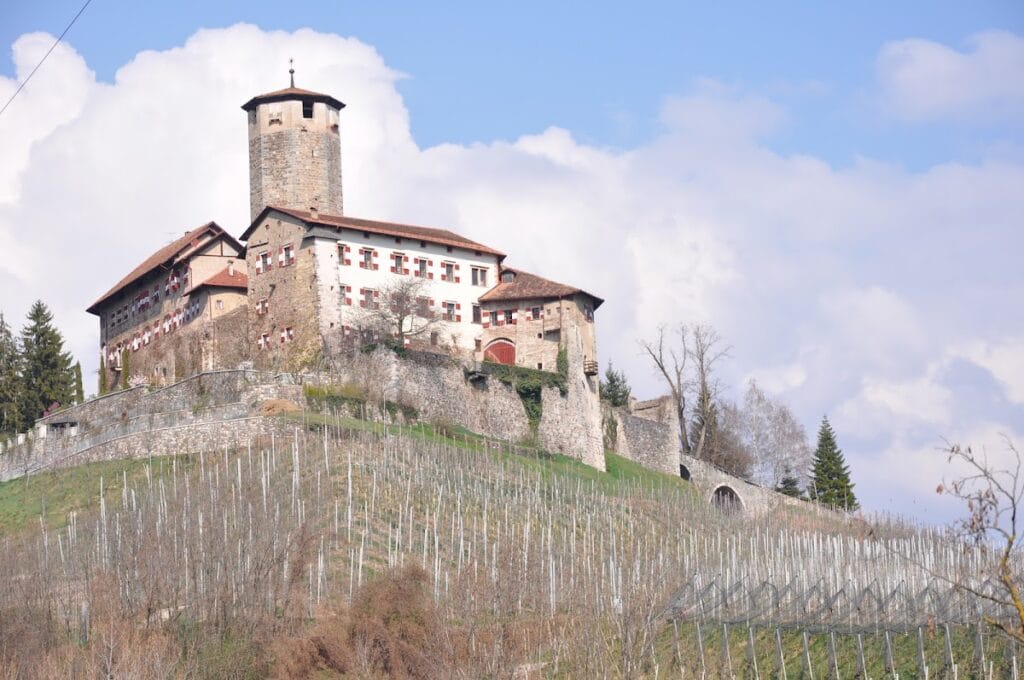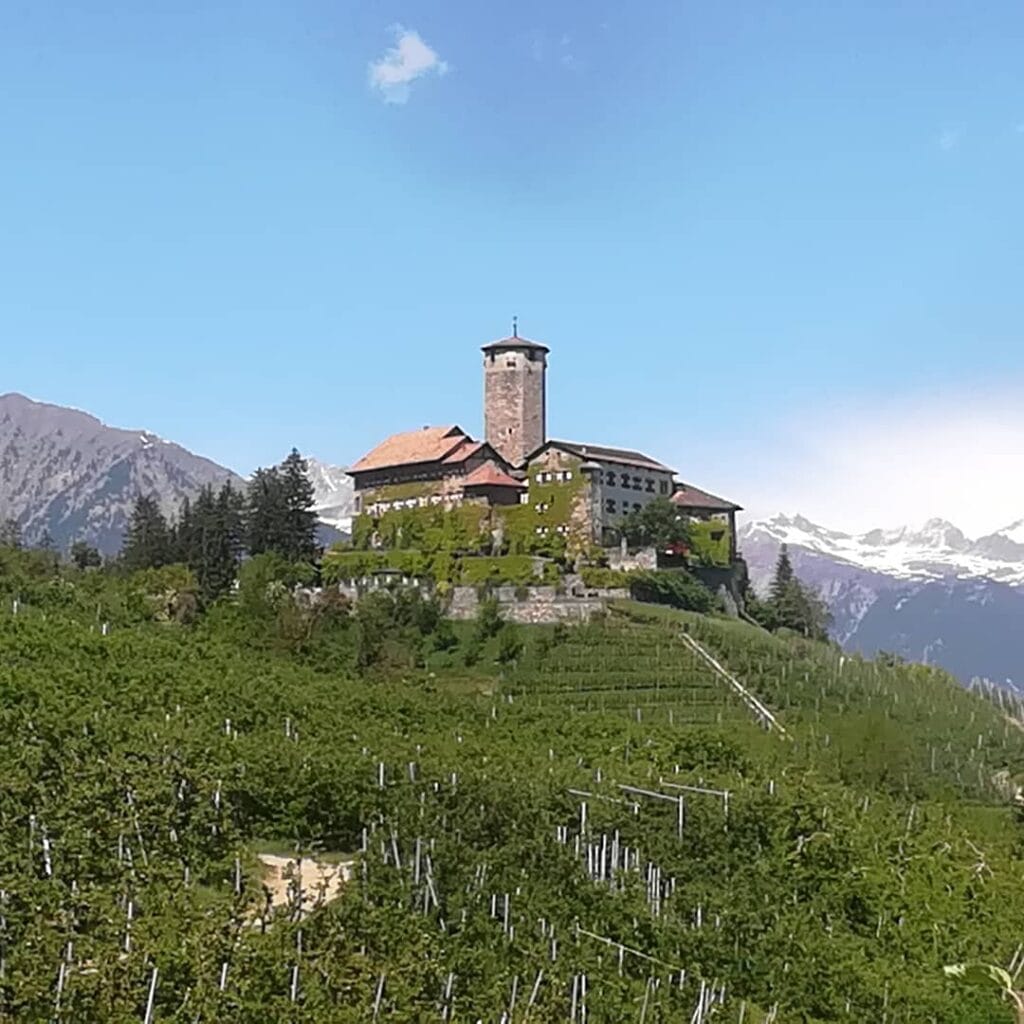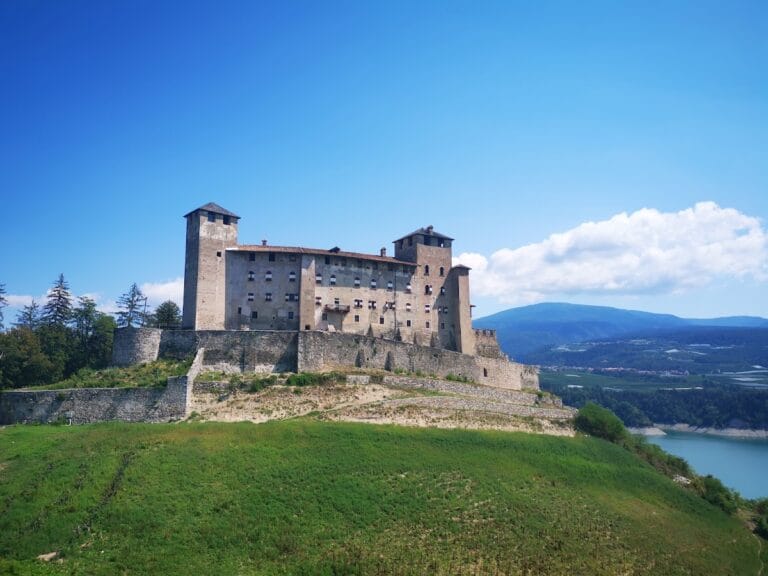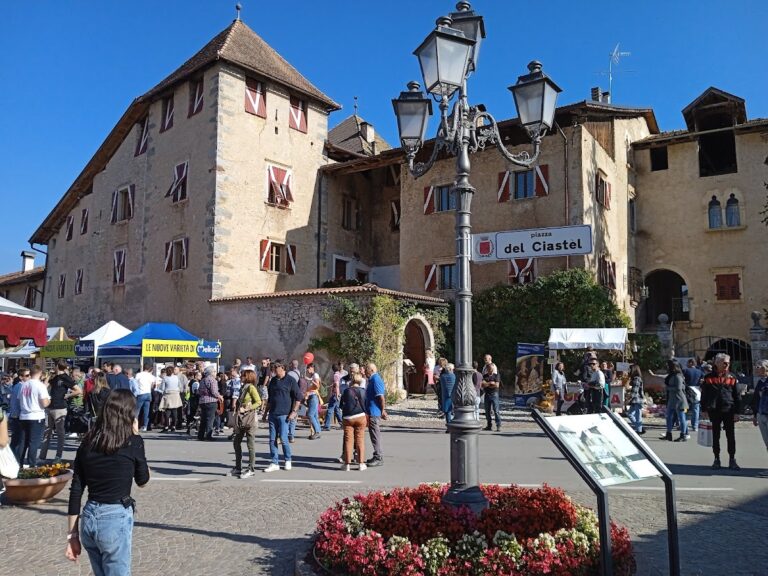Valer Castle: A Medieval Fortress in Ville d’Anaunia, Italy
Visitor Information
Google Rating: 4.6
Popularity: Low
Google Maps: View on Google Maps
Official Website: www.visitvaldinon.it
Country: Italy
Civilization: Unclassified
Remains: Military
History
Valer Castle is a medieval hilltop fortress situated in the municipality of Ville d’Anaunia, Italy. Constructed during the late Middle Ages, it reflects the efforts of regional noble families and imperial rulers to assert control over the Non Valley.
The castle’s origins date back to the second half of the 13th century, a period marked by the growing influence of the Counts of Flavon and the political presence of Meinhard II, Count of Tyrol. The earliest certain documentary mention comes from 1297, although some debated sources suggest references as early as 1211 or 1237. Its imposing octagonal tower is connected to the legacy of the Staufer dynasty, with links to the 1266 Italian campaign of Conradin, the last Hohenstaufen ruler, underscoring its role in expressing imperial authority in the region.
Ownership changed hands several times in the late medieval period. By 1297, Heinrich II of Schenna had possession, and in 1301 it belonged to Ulrich I of Coreth. Soon after, the castle came under the Counts of Tyrol’s domain before being sold to Ludwig the Brandenburger in the mid-14th century. In 1363, the Habsburgs incorporated the castle into their territories, reflecting shifting dynastic ambitions.
From 1427, Valer Castle was divided between two branches of the Spaur family, who converted the fortress into two distinct residences known as the Upper and Lower Valer. Remarkably, the Spaurs maintained their connection with the castle for over four centuries, surviving political changes and natural challenges. Their tenure ended with the death of Count Ulrich von Spaur in 2021. Shortly thereafter, in 2023, the Autonomous Province of Trento acquired the property, marking a new chapter in its stewardship.
Religious life at the castle centered on a chapel dedicated to Saint Valerius of Trier. Documented from 1368, the chapel underwent significant reconstruction in 1473 under Roland Spaur. It is adorned with frescoes by Giovanni and Battista Baschenis, replacing an earlier structure that may have existed before or alongside the castle itself.
Throughout its history, Valer Castle experienced damage from natural events, notably landslides triggered by the flooding of the nearby Rio Paglia in 1706, which caused parts of the structure to collapse. Repairs were conducted in the 18th century, and restoration efforts persisted into the modern era, including hillside stabilization between 2001 and 2005 to protect the complex from further erosion.
Remains
Valer Castle occupies a strategic hill rising 594 meters above sea level on the right bank of the Noce River, spreading over nearly 3,000 square meters. The fortress is composed of a series of concentric buildings arrayed around an imposing octagonal tower known as a bergfried, which served as both a stronghold and a lookout. This central keep, measuring 3.8 meters on each side with walls over two meters thick, rises to more than 30 meters, constructed from a mixture of multicolored limestone, porphyry, and tonalite. Built in several stages, the bergfried gained additional height and defensive features such as battlements and crossbow openings during the 15th century.
The castle divides naturally into two main sections. The Lower Castle, forming a semicircular enclosure northeast of the bergfried, represents the older part of the complex and includes a courtyard with a deep well, partially covered by a vaulted ceiling. This section also contains the Wappensaal or Coat of Arms Hall, where heraldic decorations celebrate allied noble families. Adjacent rooms include a Gothic-style kitchen preserved with original furnishings and wooden-panelled studies. Among the Lower Castle’s highlights is the Ulrich Hall, a spacious reception room featuring a wooden ceiling from 1552 adorned with multiple coats of arms and over 150 family portraits. Tradition holds that a harpsichord in this hall was played by Wolfgang Amadeus Mozart during his 1796 tour of Italy.
The Upper Castle was developed during the Renaissance in the 15th century, housing residential quarters along the southern and western sides. An elegant loggia with triforia (triple-arched windows) supported by pink limestone columns offers panoramic views across the Non Valley. Stucco decorations and family emblems embellish this area, reflecting the aesthetic preferences of its noble occupants.
A distinctive feature of the castle is its chapel, located at the northwest corner integrated into the outer defensive wall called a zwinger, a narrow enclosed space designed to trap attackers. The chapel, dedicated to Saint Valerius, has a rectangular layout with a nave and a presbytery, both covered by ribbed vaults. The frescoes inside, painted in 1473 by the Baschenis brothers, illustrate biblical narratives, saints, and heraldic imagery. Some of these paintings show damage due to inserted windows and structural shifts caused by hillside movements.
Defensive elements include at least two concentric curtain walls encircling the main structures, though parts of the outer walls have been altered to create gardens. A stone bridge crosses the castle’s moat on the northeast side, leading to a gate protected by a ravelin (a triangular fortification) and a rounded-arch entrance. The bergfried once connected to the Lower Castle’s east wing via a wooden bridge designed to be destroyed during an attack, with a later secondary access gateway linking it to the Upper Castle.
Many original furnishings survive on-site, such as historic tiled stoves from nearby Sfruz and the medieval kitchen, offering a rare glimpse into the domestic arrangements of the castle’s former inhabitants. The elaborate frescoes by Marcello Fogolino in the Lower Castle’s loggia and the Madruzzo Rooms add artistic richness, filled with allegorical and heraldic themes dating to the 16th century.
Together, these features reveal Valer Castle not only as a fortified residence but as a complex evolving through medieval and Renaissance periods, bearing witness to the history and culture of its noble owners.










